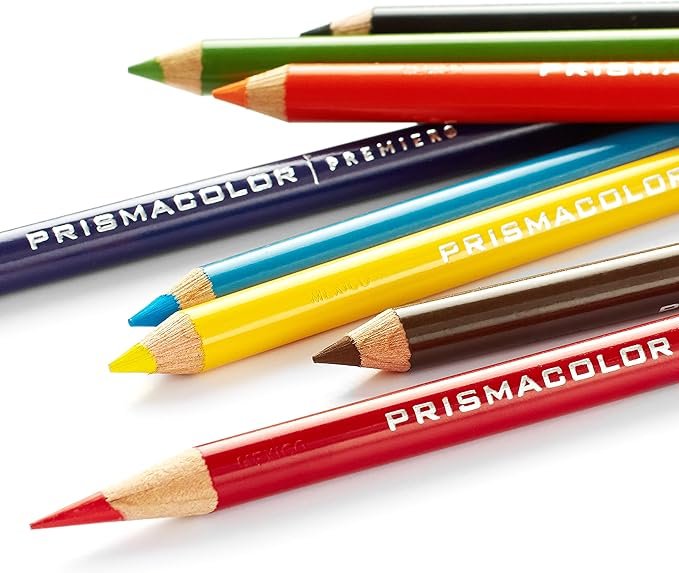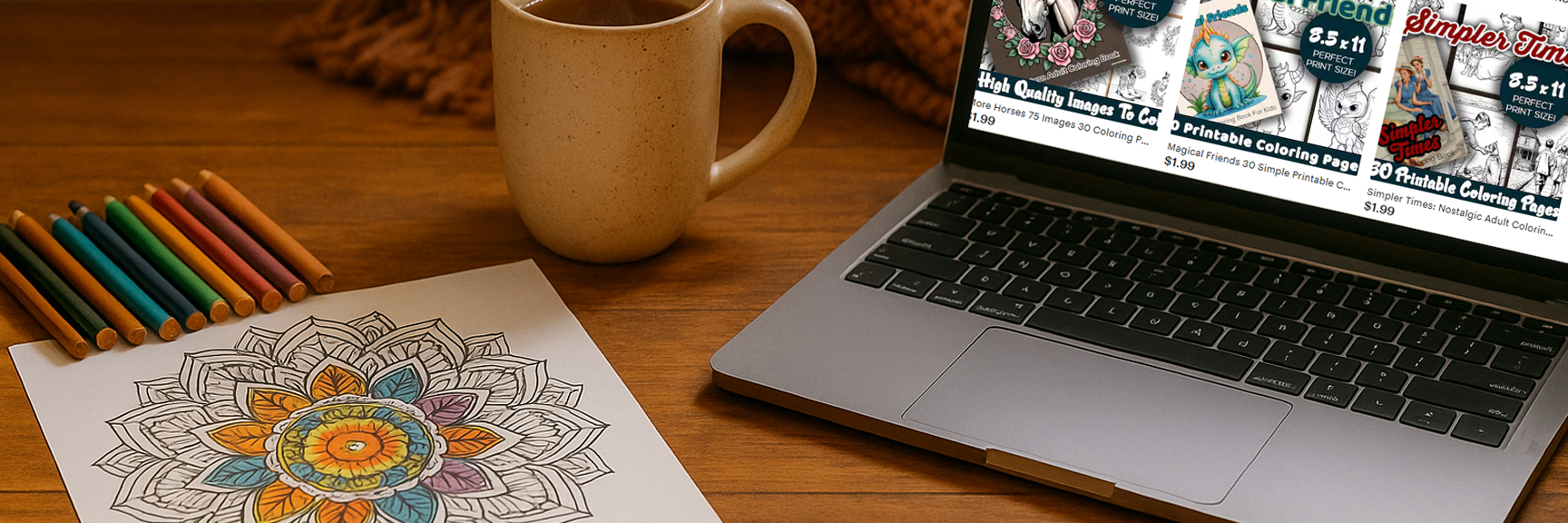Finding the right colored pencils that blend smoothly can transform your artwork into a canvas of vibrant, seamless color transitions. Whether you’re an experienced colorist or just starting your artistic journey, one of the most common challenges is overcoming issues like uneven blending and streaky color application. In this article, we’ll explore what to look for when choosing colored pencils that blend, discuss common challenges that artists face with blending and streaky colors, and compare two popular options on the market—Prismacolor Premier Soft Core Colored Pencils and Faber Castell Polychromous Colored Pencil Set.
Understanding the Importance of Colored Pencils That Blend Well
Artists and hobbyists alike know that nothing disrupts the flow of an artwork like harsh lines or clashing hues. The key to achieving smooth transitions lies in the quality of your colored pencils and their ability to blend effortlessly. Colored pencils that blend well allow you to create gradients and soft transitions between hues without leaving visible marks or streaks.
Many creators struggle with streaky colors and uneven blending because not all colored pencils are created equal. The composition of the pencil’s core, the pigment concentration, and the type of paper you use all contribute to how well the pencil blends. If you have ever experienced frustration when your colors appear patchy or fail to merge smoothly, you are not alone. Addressing these issues begins with selecting pencils that are engineered for optimal blending.
Why Smooth Blending Matters in Your Art
Smooth blending not only elevates the visual appeal of your artwork but also saves you time during the creative process. When your colored pencils that blend function as intended, you can focus on your artistic expression rather than struggling with technical setbacks. Consistent blending allows for richer color layers and depth, enhancing the overall impact of your art.
Artists often face challenges such as harsh transitions and visible pencil strokes that can distract from the intended mood or subject of their work. By using high-quality pencils that blend well, you can minimize these issues and produce work that truly reflects your creative vision.
Common Issues with Blending and Streaky Colors
One major challenge is the issue of streaky colors. Streaks often appear when the pencil’s pigment does not apply evenly on the paper, which can result from a variety of factors including the type of pencil, the paper quality, or even the application technique. When streaks occur, they can break up what would otherwise be smooth, harmonious transitions between colors.
Another frequent issue is uneven blending. This happens when colors do not merge seamlessly, leaving patches where the colors seem separated. This problem is not only frustrating but can also impact the overall quality of the finished piece, making it appear amateurish.
Many colorists have encountered these issues, which is why investing in colored pencils that blend well is so critical. For those who want to improve their blending experience, it may be worth exploring additional tips on how to blend with colored pencils for vibrant art. You can find some essential advice on this topic at Essential Tips on How to Blend With Colored Pencils for Vibrant Art.
Choosing the Best Colored Pencils That Blend
When selecting colored pencils that blend effectively, several factors should be considered. The quality of the pencil core, the consistency of the pigment, and the overall build of the pencil are all crucial. Pencils with a soft core typically allow for smoother color transitions compared to those with a harder core. Additionally, pencils that contain a high concentration of pigment tend to produce richer, more saturated colors that are easier to blend.
It is also important to consider your personal needs and budget. Some artists are willing to invest in higher-end products, while others may prefer more affordable options that still offer good blending capabilities. Two products that are frequently discussed in this context are the Prismacolor Premier Soft Core Colored Pencils and the Faber Castell 24 Piece Polychromous Colored Pencil Set.


Comparing Prismacolor Premier Colored Pencils and Faber Castell Colored Pencils
Both Prismacolor Premier and Faber Castell offer colored pencils that blend very well, but they do have distinct characteristics that set them apart.
Prismacolor Premier Soft Core Colored Pencils are widely recognized for their rich pigmentation and soft cores, which provide excellent blending capabilities. They tend to produce smoother transitions and are favored by many artists for creating subtle gradients. However, some users report that the soft core can sometimes lead to quicker wear, meaning you may need to sharpen them more frequently during extended sessions.
On the other hand, Faber Castell 24 Piece Polychromous Colored Pencil Set is known for its durability and consistency. These pencils are often praised for their ability to blend well while also maintaining a firmer core, which can be beneficial if you prefer more control over your strokes. They may require a slightly firmer hand for effective blending, but they excel in situations where longevity and precision are important.
Choosing between these two often comes down to personal preference and the specific requirements of your artwork. If you value intense saturation and a soft application, Prismacolor Premier colored pencils might be your best bet. If you need reliability and a pencil that can withstand more pressure, Faber Castell colored pencils could be the better choice.
How to Troubleshoot Blending Issues
Even with high-quality colored pencils that blend, you might occasionally encounter issues with streaky or uneven application. Several factors can contribute to these problems, and understanding them can help you troubleshoot effectively.
First, consider the paper you are using. A smooth, high-quality paper that is designed for colored pencils can significantly impact the way colors blend. Rough or overly absorbent paper may cause pigments to settle unevenly, resulting in streaks.
Next, the technique you use also matters. Applying too much pressure or moving too quickly across the page can lead to uneven blending. Instead, a light, layered approach often yields the best results. Patience and practice are key, as you refine your technique to suit the specific pencils you use.
Another factor to keep in mind is the condition of your pencils. Over time, pencil cores can become uneven or break, which may impact blending performance. Regular maintenance, such as proper sharpening and storage, is essential to keep your colored pencils in top condition.
The Role of Digital Tools and Resources
In today’s digital age, many artists are turning to digital tools to supplement their traditional art supplies. Digital character sheet PDFs and online blending guides can offer valuable insights and streamline your workflow. While this article focuses on physical colored pencils that blend, it’s worth noting that digital resources can enhance your overall creative process.
For instance, digital tutorials and guides provide visual examples and step-by-step instructions on how to troubleshoot blending issues and achieve smooth color transitions. These resources can be particularly helpful when you’re experimenting with new techniques or trying to perfect your approach.
Tips for Maintaining Your Colored Pencils for Optimal Blending
Maintaining your colored pencils properly is just as important as choosing the right ones. Keeping your pencils in good condition ensures that they continue to blend smoothly over time. Here are a few maintenance tips to keep in mind:
- Store your pencils in a cool, dry place to prevent the core from softening or becoming brittle.
- Use a high-quality sharpener to maintain a fine, consistent point.
- Clean your pencils occasionally to remove any residue that may affect blending.
- Rotate your pencils during use to avoid overworking a single pencil, which can lead to premature wear.
These simple steps can help you enjoy consistent performance from your colored pencils that blend, making it easier to achieve smooth transitions in every project.
Enhancing Your Artwork with Quality Colored Pencils That Blend
The right colored pencils that blend can elevate your artwork to new levels of professionalism and creativity. When you invest in quality products, you can reduce frustration and focus more on expressing your artistic vision. By understanding the factors that contribute to smooth blending and being mindful of common issues like streaky colors, you can enhance the overall quality of your work.
Using the appropriate tools and techniques to maintain a smooth application not only improves your art but also makes the creative process more enjoyable. Whether you’re working on intricate illustrations or casual sketches, the impact of using high-quality, blendable colored pencils is undeniable.
Elevate Your Art with Colored Pencils That Blend Smoothly
Achieving smooth color transitions in your artwork is within reach when you choose the right colored pencils that blend. By addressing common challenges such as uneven application and streaky colors, and by understanding the benefits of quality products like Prismacolor Premier Soft Core Colored Pencils and Faber Castell 24 Piece Polychromous Colored Pencil Set, you can elevate your creative projects to a new level.
For those who value a seamless blending experience and want to improve the overall quality of their artwork, investing in high-quality colored pencils is essential. Whether you prefer the soft, rich hues of Prismacolor or the reliable durability of Faber Castell, the right tools can make all the difference.
If you’re looking for creative inspiration, consider signing up for our free printable coloring pages.


